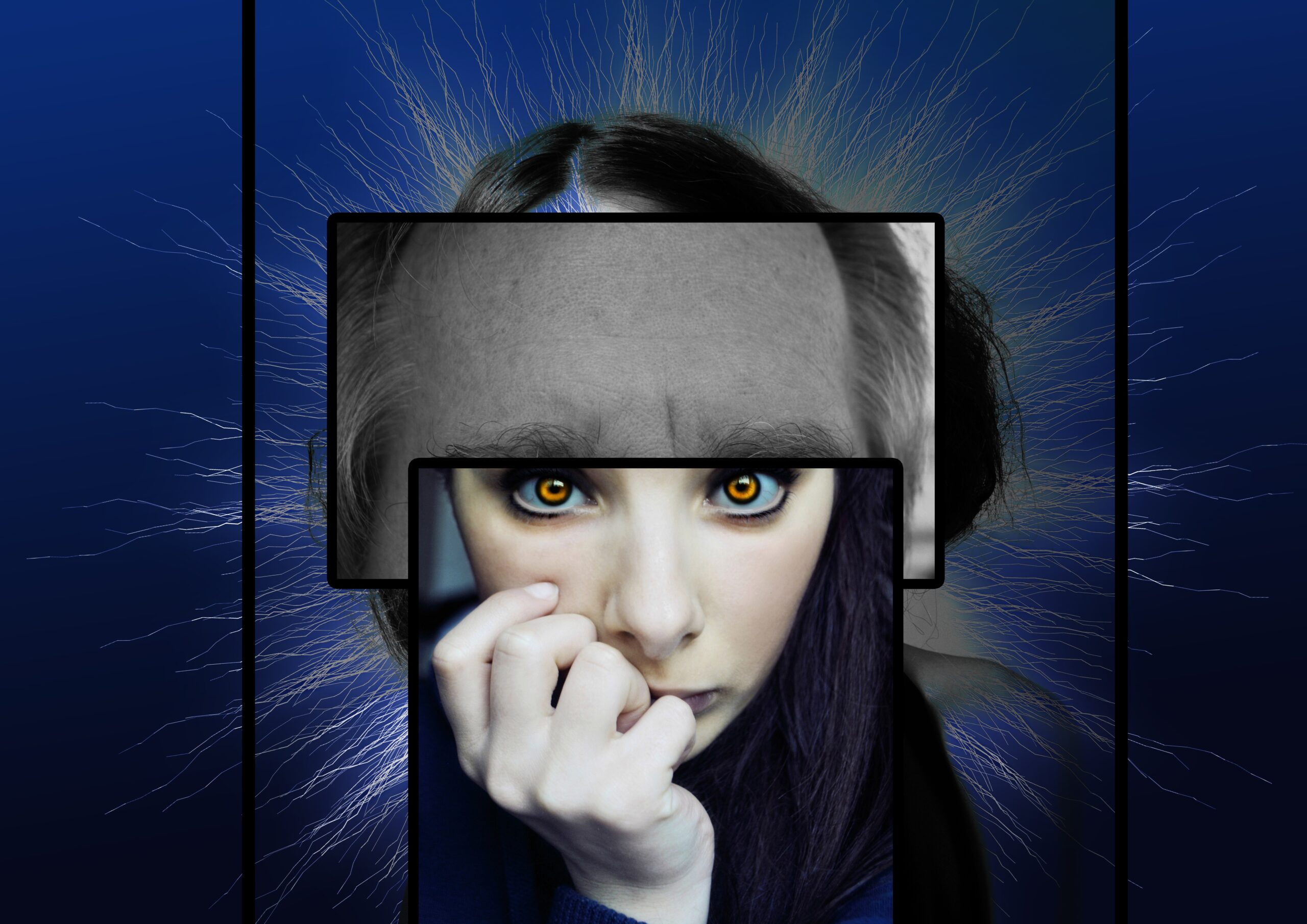What is Alice in Wonderland syndrome?
Alice in Wonderland Syndrome is a rare neurological condition that affects the perception of one’s body size and shape, as well as the size and shape of external objects.
People with Alice in wonderland syndrome may experience distortions in their vision, hearing, touch, and sense of time. They may see themselves or others as very large or small or see objects as closer or farther than they are. These episodes can last from a few seconds to several minutes and may occur spontaneously or be triggered by stress, fatigue, fever, or drugs.
Alice in wonderland syndrome is named after the novel Alice’s Adventures in Wonderland by Lewis Carroll, in which the protagonist, Alice, experiences similar changes in her perception of reality. Alice in Wonderland syndrome (AIWS) is also known as Todd’s syndrome or Dysmetropsia. It is one of rare mental disorders.
Alice in Wonderland Syndrome Causes
The exact cause of Alice in Wonderland syndrome (AIWS) is unknown, but it has been linked to various factors that affect the brain. Some of the possible causes are:
Migraines
Migraines are severe headaches that can cause changes in blood flow and electrical activity in the brain. Migraines are the most common cause of AIWS, especially in children. About 30% of people with migraines experience visual disturbances, such as seeing flashes of light, zigzag lines, or blind spots. Some of these disturbances may resemble the symptoms of AIWS.
Viral infections
Viral infections, such as influenza, Epstein-Barr, or varicella-zoster, can cause brain inflammation (encephalitis), affecting the perception of reality. AIWS has been reported in some cases of viral encephalitis, especially in children. The symptoms of AIWS usually resolve after the infection is treated.
Epilepsy
Epilepsy is a neurological disorder that causes recurrent seizures, which are sudden bursts of abnormal electrical activity in the brain. Seizures can affect different brain parts, including the areas that process visual and sensory information. AIWS has been observed in some people with epilepsy, especially those with temporal lobe epilepsy, which affects the part of the brain involved in memory and emotions.
Brain tumors, Aneurysms, or Strokes
These are abnormal growths or blockages in the blood vessels or tissues of the brain, which can interfere with the brain’s normal functioning. AIWS has been reported in some cases of brain tumours, aneurysms, or strokes, especially those affecting the parietal lobe, which is responsible for spatial awareness and body image.
Medications or Drugs
Some medications or drugs can alter the brain chemistry and cause hallucinations or distortions in perception. AIWS has been associated with some medications, such as cough syrup, antihistamines, antidepressants, or antipsychotics. AIWS has also been reported in some cases of drug abuse, such as LSD, cannabis, or ecstasy.
Psychiatric Disorders
Some psychiatric disorders, such as depression, schizophrenia, or dissociative disorders, can affect the mood, thoughts, and sense of reality of a person. Todd’s Syndrome has been reported in some people with psychiatric disorders, especially those with depersonalization or derealization, which are feelings of detachment from oneself or one’s surroundings.
What are the Symptoms of AIWS?
Todd’s Syndrome Symptoms
The symptoms of Alice in Wonderland Syndrome are varied and can affect different aspects of perception, such as vision, hearing, touch, time, and body image. Some of the common symptoms are:
Micropsia: Seeing objects or oneself as more minor than they are.
Macropsia: Seeing objects or oneself as more significant than they are.
Pelopsia: Seeing objects as closer than they are.
Porropsia: Seeing objects as farther than they are.
Dysmorphopsia: Seeing objects or lines as distorted or wavy.
Akinetopsia: Seeing objects as moving when they are stationary.
Chloropsia: Seeing objects in different colors than they are.
Zoom vision: Seeing objects as magnified or zoomed in.
Macrosomatognosia: Feeling that one’s body or body parts are more extensive than they are.
Microsomatognosia: Feeling that one’s body or body parts are smaller than they are.
Levitation: Feeling that one is floating or hovering above the ground.
Somatopsychic duality: Feeling that one’s body is split into two parts.
Derealization: Feeling that one’s surroundings are unreal or dreamlike.
Depersonalization: Feeling that one does not exist or is detached from one’s body or emotions.
Distorted time: Feeling that time is passing too fast or too slow.
These symptoms can last for a few seconds.

HOW MUCH COMMON IS AIWS?
Alice in Wonderland syndrome (AIWS) is a rare neurological condition that affects the perception of one’s body size and shape, as well as the size and shape of external objects. The exact prevalence of Alice in wonderland syndrome is unknown, but it seems to be more common in children and people with certain brain-related conditions, such as migraines, epilepsy, or infections. According to one study, up to 15% of patients with migraines may experience AIWS symptoms.
However, Alice in wonderland syndrome may also occur in healthy individuals, especially adolescents, who may report nonclinical episodes of distorted perception. AIWS is not a dangerous or harmful condition, but it can be distressing and confusing for those who experience it. Therefore, it is crucial to seek medical attention if the symptoms persist or interfere with daily functioning.
How is Alice in Wonderland Syndrome Diagnosed and Cured?
Todd’s syndrome is a rare neurological condition that affects the perception of one’s body size and shape, as well as the size and shape of external objects. AIWS can cause various vision, hearing, touch, and time distortions.
Diagnosis of Dysmetropsia
To diagnose Alice in wonderland syndrome, a doctor may ask about the patient’s medical history, symptoms, and possible triggers. AIWS is often associated with migraines, infections, epilepsy, brain lesions, medications, or psychiatric disorders. Therefore, the doctor may perform some tests to rule out or confirm these conditions. Some of the tests may include:
Blood tests to check for signs of infection or inflammation.
MRI scans to examine the brain for any abnormalities or damage.
EEG to measure the electrical activity of the brain and detect any seizures.
Eye tests to assess the visual function and understanding of the patient.
AIWS Treatment
There is no specific treatment for AIWS, as it is usually a self-limiting condition that resolves independently. However, treatment may focus on addressing the underlying causes or triggers of AIWS, such as:
Taking anti-migraine medications to prevent or reduce the frequency and severity of migraines can alleviate AIWS symptoms.
Taking antiviral or antibiotic medications to treat infections that may cause Alice in wonderland syndrome.
Taking antiepileptic medications to control seizures that may cause AIWS.
Taking antipsychotic medications to manage psychiatric disorders that may cause Alice in wonderland syndrome.
Avoiding or reducing the use of drugs or medications that may cause AIWS, such as cough syrup, antihistamines, antidepressants, or anti psychotics.
Practicing relaxation techniques, such as meditation, yoga, or breathing exercises, to cope with stress, anxiety, or fatigue that may trigger Alice in wonderland syndrome.
Is Alice in wonderland syndrome contagious?
AIWS is not a dangerous or harmful condition, but it can be distressing and confusing for those who experience it. Therefore, it is essential to seek medical attention if the symptoms persist or interfere with daily functioning.
Is Todd’s syndrome curable?
There is no specific cure for Alice in Wonderland syndrome (AIWS), as it is usually a self-limiting condition that resolves independently. However, treatment may focus on addressing the underlying causes or triggers of AIWS, such as migraines, infections, epilepsy, brain lesions, medications, or psychiatric disorders. By treating these conditions, the symptoms of AIWS may be prevented or reduced.
What Famous Persons Have Alice in wonderland Syndrome
Alice in Wonderland syndrome (AIWS) is a rare neurological condition that causes people to perceive objects as larger or smaller than they actually are. It can also cause other perceptual distortions, such as objects appearing to move or change shape. AIWS is often triggered by migraines, epilepsy, or brain tumors.

10 Celebrities with Alice in Wonderland syndrome
Here are 10 celebrities who have reported experiencing symptoms of AIWS:
1. Lil Wayne
The rapper has spoken about experiencing AIWS since he was a child. He has said that objects sometimes appear to grow or shrink in size and that he can sometimes feel like he is floating or falling. He has also said that his symptoms are most severe when he is using marijuana or other drugs.
2. Winona Ryder
The actress has said that she has experienced AIWS since she was a teenager. She has said that her symptoms are most severe when she is tired or stressed. She has also said that her symptoms are triggered by bright lights and loud noises.
3. Orlando Bloom
The actor has said that he has experienced AIWS since childhood. He has said that his symptoms are most severe when he is in bright lights or loud noises. He has also said that his symptoms are triggered by caffeine and nicotine.
4. Johnny Depp
The actor has said that he has experienced AIWS since childhood. He has said that his symptoms are most severe when he is using stimulants, such as caffeine or nicotine. He has also said that his symptoms are triggered by stress and anxiety.
5. Miley Cyrus
The singer has said that she has experienced AIWS since childhood. She has said that her symptoms are most severe when she is under a lot of pressure. She has also said that her symptoms are triggered by stress, anxiety, and lack of sleep.
6. Selena Gomez
The singer has said that she has experienced AIWS since childhood. She has said that her symptoms are most severe when she is feeling anxious or stressed. She has also said that her symptoms are triggered by caffeine, nicotine, and alcohol.
7. Lady Gaga
The singer has said that she has experienced AIWS since childhood. She has said that her symptoms are most severe when she is feeling overwhelmed or out of control. She has also said that her symptoms are triggered by stress, anxiety, and lack of sleep.
8. Justin Bieber
The singer has said that he has experienced AIWS since he was a child. He has said that his symptoms are most severe when he is feeling tired or dehydrated. He has also said that his symptoms are triggered by caffeine, nicotine, and alcohol.
9. Nick Jonas
The singer has said that he has experienced AIWS since he was a child. He has said his symptoms are most severe when feeling sick or under the weather. He has also said that his symptoms are triggered by caffeine, nicotine, and stress.
10. Ariana Grande
The singer has said that she has experienced AIWS since childhood. She has said that her symptoms are most severe when she is feeling anxious or stressed. She has also said that her symptoms are triggered by caffeine, nicotine, and lack of sleep.
It is important to note that these celebrities have not been diagnosed with AIWS by a medical professional. It is possible that they are experiencing symptoms of another condition or that their experiences are inconsistent with the diagnostic criteria for AIWS. If you are concerned about experiencing AIWS, seeing a doctor for diagnosis and treatment is important.



1 thought on “What is Alice in Wonderland Syndrome?”